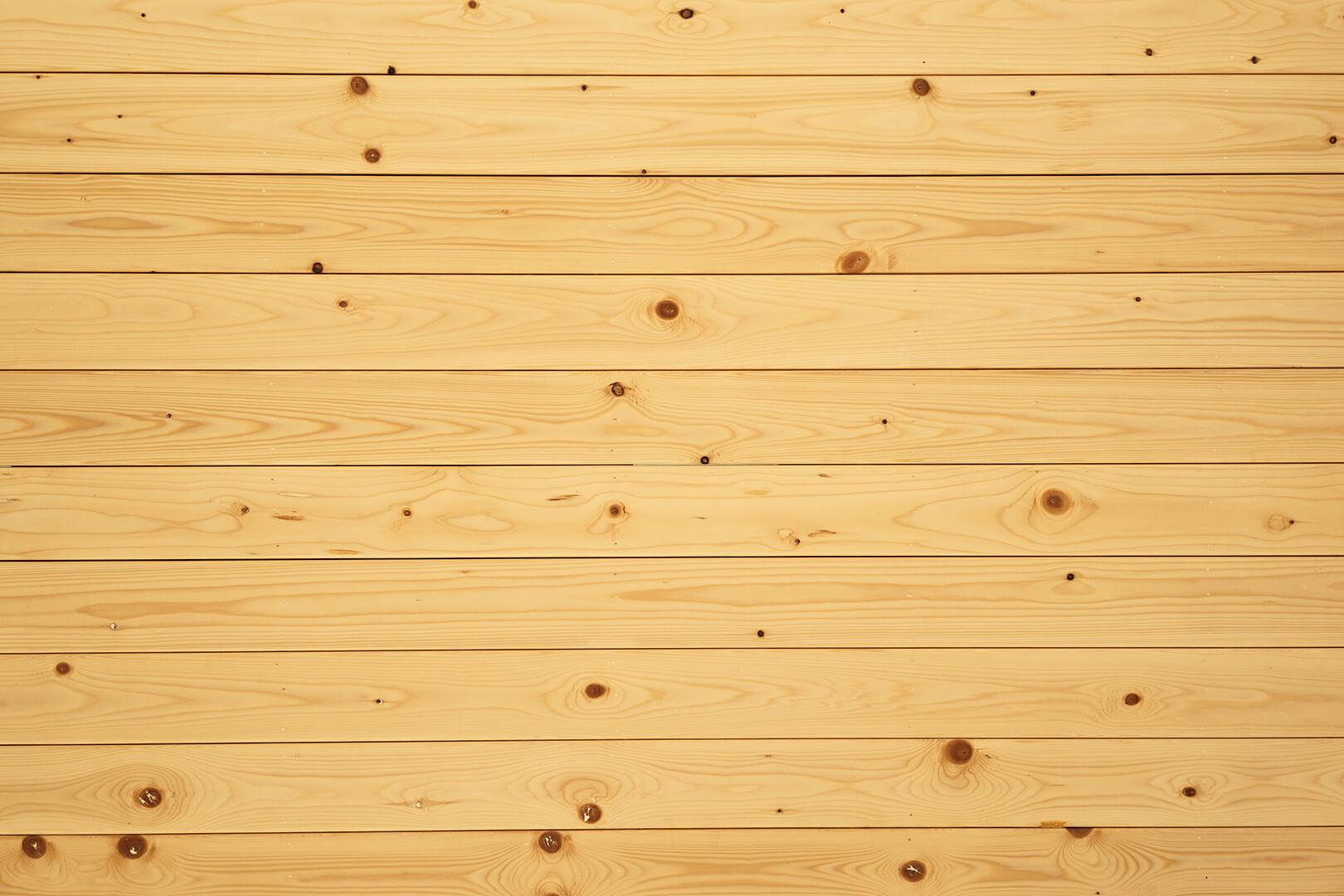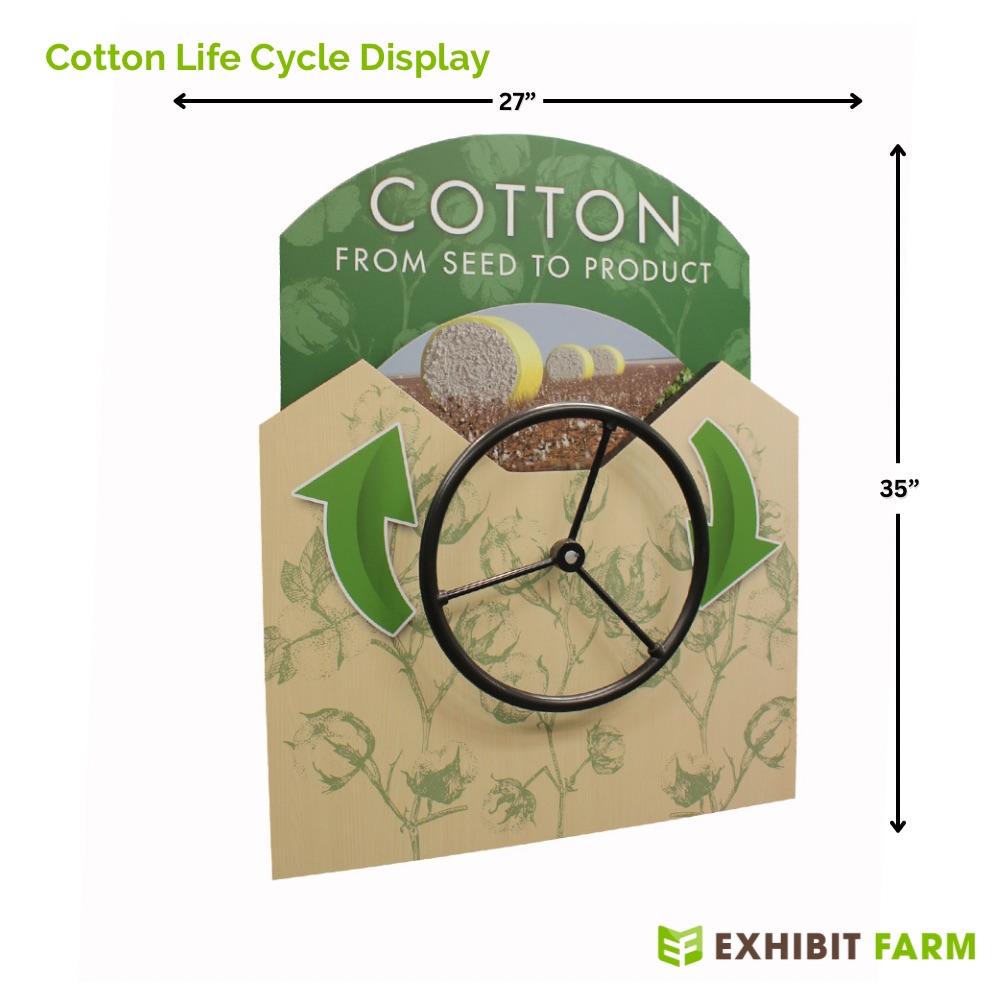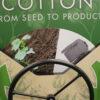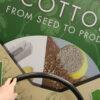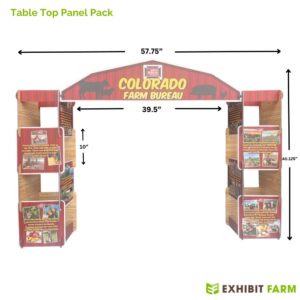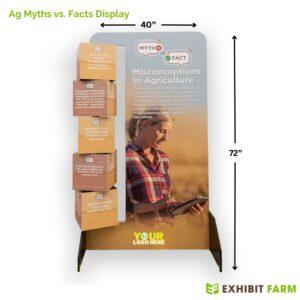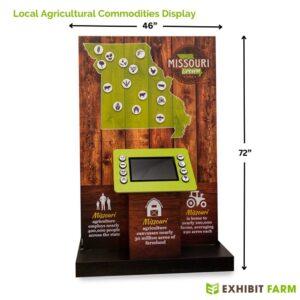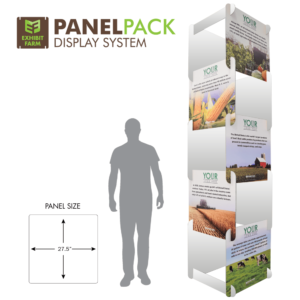Description
This display offers a visual approach to understanding cotton. It features a circular panel divided into four sections, each with a photo of one stage in the life cycle of cotton. The first photo shows a cotton seedling: the next shows a mature cotton plant. The third photo shows several round cotton bales sitting in a field of dry, harvest- ready cotton. And the last photo is a collage of cotton products, from towels and sweaters to coffee filters. Visitors turn the wheel on the front of the display to spin the panel and watch cotton’s life cycle. We build the life cycle display out of sturdy birch plywood panels covered with a scuff-guard laminate. This makes it a reliable choice for museum exhibits that might stay up for decades.
